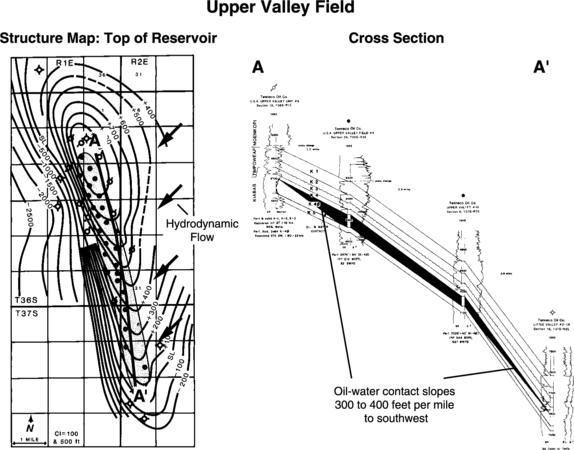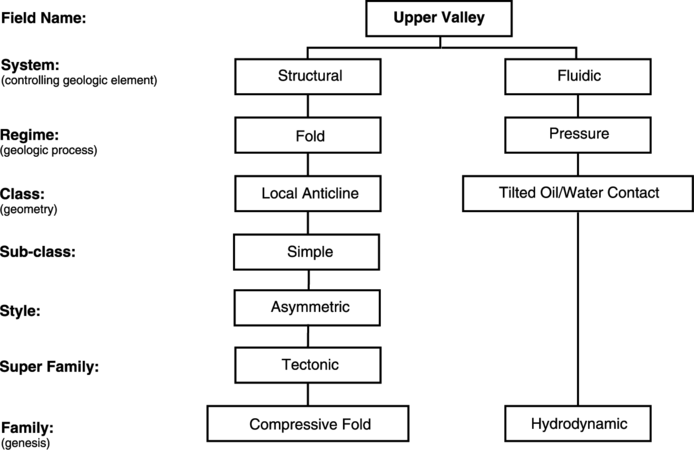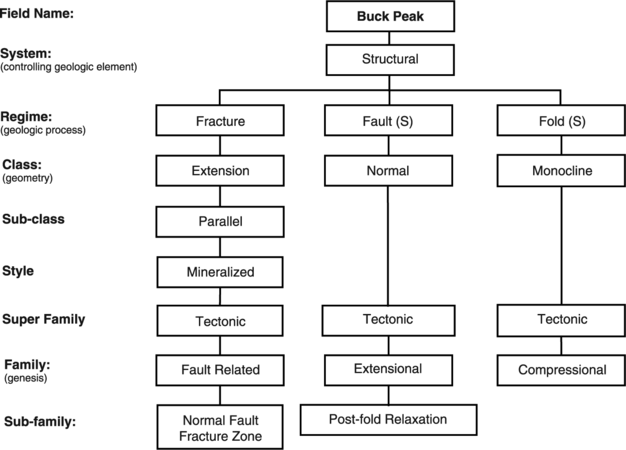Difference between revisions of "Combination trap"
Cwhitehurst (talk | contribs) |
Cwhitehurst (talk | contribs) m (added Category:Treatise Handbook 3 using HotCat) |
||
| (13 intermediate revisions by 3 users not shown) | |||
| Line 6: | Line 6: | ||
| part = Traps, trap types, and the petroleum system | | part = Traps, trap types, and the petroleum system | ||
| chapter = Classification of exploration traps | | chapter = Classification of exploration traps | ||
| − | | frompg = 2- | + | | frompg = 2-16 |
| − | | topg = 2- | + | | topg = 2-18 |
| author = Richard R. Vincelette, Edward A. Beaumont, Norman H. Foster | | author = Richard R. Vincelette, Edward A. Beaumont, Norman H. Foster | ||
| link = http://archives.datapages.com/data/specpubs/beaumont/ch02/ch02.htm | | link = http://archives.datapages.com/data/specpubs/beaumont/ch02/ch02.htm | ||
| Line 14: | Line 14: | ||
| isbn = 0-89181-602-X | | isbn = 0-89181-602-X | ||
}} | }} | ||
| − | Secondary or even tertiary trapping elements commonly modify the primary trapping agent. Structural traps may have a stratigraphic component or vice versa. Sometimes the distinction whether the trap belongs to one system or another is quite blurred. Traps with two or more trapping elements are called combination traps. | + | Secondary or even tertiary trapping elements commonly modify the primary trapping agent. [[Structural trap system|Structural traps]] may have a [[Stratigraphic trap|stratigraphic]] component or vice versa. Sometimes the distinction whether the trap belongs to one system or another is quite blurred. Traps with two or more trapping elements are called combination traps. |
==Primary trapping element== | ==Primary trapping element== | ||
| Line 20: | Line 20: | ||
==Classifying combination traps informally== | ==Classifying combination traps informally== | ||
| + | <gallery mode=packed widths=300px heights=300px> | ||
| + | file:classification-of-exploration-traps_fig2-3.png|{{figure number|1}}Upper Valley field, Utah. Courtesy Rocky Mountain Association of Geologists. | ||
| + | file:classification-of-exploration-traps_fig2-4.png|{{figure number|2}}Formal classification for Upper Valley field. | ||
| + | file:classification-of-exploration-traps_fig2-5.png|{{figure number|3}}Buck Peak field. Modified from Vincelette and Foster.<ref name=VinceletteandFoster>Vincelette, R. R., and N. H. Foster, 1992, Fractured Niobrara of Northwestern Colorado, ''in'' J. W. Schmoker, E. B. Coalson, and C. A. Brown, eds., Geologic Studies Relevant to Horizontal Drilling: Examples from Western North America: RMAG, p 227-23=42.</ref> Courtesy Rocky Mountain Association of Geologists. | ||
| + | file:classification-of-exploration-traps_fig2-6.png|{{figure number|4}}Formal classification for the Buck Peak field. | ||
| + | </gallery> | ||
| − | + | To classify a combination trap informally, list the primary trap element first, followed by secondary and tertiary trap elements. You can classify a combination trap informally in at least two different formats. For example, Upper Valley field, Utah, shown in the map and [[cross section]] in [[:file:classification-of-exploration-traps_fig2-3.png|Figure 1]], could be classified informally as (1) a hydrodynamically modified anticlinal trap or as (2) a hydrodynamic/anticlinal trap. | |
| − | |||
| − | To classify a combination trap informally, list the primary trap element first, followed by secondary and tertiary trap elements. You can classify a combination trap informally in at least two different formats. For example, Upper Valley field, Utah, shown in the map and cross section in [[:file:classification-of-exploration-traps_fig2-3.png| | ||
==Classifying combination traps formally== | ==Classifying combination traps formally== | ||
| − | + | We classify a trap formally by listing the regimes, classes, and families for the primary, secondary, and (if necessary) tertiary systems. For example, the diagram in [[:file:classification-of-exploration-traps_fig2-4.png|Figure 2]] shows the formal classification for Upper Valley field. | |
| − | |||
| − | We classify a trap formally by listing the regimes, classes, and families for the primary, secondary, and (if necessary) tertiary systems. For example, the diagram in [[:file:classification-of-exploration-traps_fig2-4.png| | ||
==Combination structural traps== | ==Combination structural traps== | ||
| − | [[file:classification-of-exploration-traps_fig2-5.png| | + | Some structural traps are combinations of the three structural trap regimes: [[Fold trap regime|fold]], [[Fault trap regime|fault]], and [[Fracture trap regime|fracture]]. The Buck Peak field shown in [[:file:classification-of-exploration-traps_fig2-5.png|Figure 3]] is an example of a combination structural trap. |
| − | + | ==Buck Peak formal classification== | |
| − | |||
| − | ==Buck | ||
| − | |||
| − | |||
The diagram in [[:file:classification-of-exploration-traps_fig2-6.png|Figure 4]] shows the formal classification for the Buck Peak field, which is a combination structural trap. | The diagram in [[:file:classification-of-exploration-traps_fig2-6.png|Figure 4]] shows the formal classification for the Buck Peak field, which is a combination structural trap. | ||
==See also== | ==See also== | ||
| − | * [[How to use the classification scheme]] | + | * [[How to use the trap classification scheme]] |
* [[Classifying traps]] | * [[Classifying traps]] | ||
| + | |||
| + | ==References== | ||
| + | {{reflist}} | ||
==External links== | ==External links== | ||
| Line 54: | Line 55: | ||
[[Category:Traps, trap types, and the petroleum system]] | [[Category:Traps, trap types, and the petroleum system]] | ||
[[Category:Classification of exploration traps]] | [[Category:Classification of exploration traps]] | ||
| + | [[Category:Treatise Handbook 3]] | ||
Latest revision as of 18:47, 12 April 2022
| Exploring for Oil and Gas Traps | |

| |
| Series | Treatise in Petroleum Geology |
|---|---|
| Part | Traps, trap types, and the petroleum system |
| Chapter | Classification of exploration traps |
| Author | Richard R. Vincelette, Edward A. Beaumont, Norman H. Foster |
| Link | Web page |
| Store | AAPG Store |
Secondary or even tertiary trapping elements commonly modify the primary trapping agent. Structural traps may have a stratigraphic component or vice versa. Sometimes the distinction whether the trap belongs to one system or another is quite blurred. Traps with two or more trapping elements are called combination traps.
Primary trapping element
To determine what the primary trapping element is, consider each element of the trap and ask, “Would the trap exist if that element were not part of the trap?” We could also ask, “Which element would I look for first if I were exploring for this trap?”
Classifying combination traps informally
Figure 3 Buck Peak field. Modified from Vincelette and Foster.[1] Courtesy Rocky Mountain Association of Geologists.
To classify a combination trap informally, list the primary trap element first, followed by secondary and tertiary trap elements. You can classify a combination trap informally in at least two different formats. For example, Upper Valley field, Utah, shown in the map and cross section in Figure 1, could be classified informally as (1) a hydrodynamically modified anticlinal trap or as (2) a hydrodynamic/anticlinal trap.
Classifying combination traps formally
We classify a trap formally by listing the regimes, classes, and families for the primary, secondary, and (if necessary) tertiary systems. For example, the diagram in Figure 2 shows the formal classification for Upper Valley field.
Combination structural traps
Some structural traps are combinations of the three structural trap regimes: fold, fault, and fracture. The Buck Peak field shown in Figure 3 is an example of a combination structural trap.
Buck Peak formal classification
The diagram in Figure 4 shows the formal classification for the Buck Peak field, which is a combination structural trap.
See also
References
- ↑ Vincelette, R. R., and N. H. Foster, 1992, Fractured Niobrara of Northwestern Colorado, in J. W. Schmoker, E. B. Coalson, and C. A. Brown, eds., Geologic Studies Relevant to Horizontal Drilling: Examples from Western North America: RMAG, p 227-23=42.



